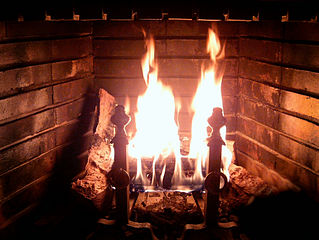The heat is on in many parts of the northern hemisphere. And, that, in places, means ozone buildup in air. California’s San Joaquin Valley being one such place.
With the many wildfires burning in the western U.S., what if any affect could this be having on localized ground-level ozone? Soot from the fires, you should know, is not the only air worry. High ozone levels have been trending in the Valley for quite some time and what’s in the wildfire smoke that has now spread from the Ferguson Fire burning near Yosemite National Park in California – 27 percent contained as of this writing – to the Valley floor, besides turning skies gray and doubtless making breathing difficult for some of the many people affected, is very likely making the Valley’s ozone problem worse. It should be noted that the San Joaquin Valley Air Pollution Control District has been issuing air-quality alerts and/or warnings related to the Ferguson Fire since July 15th.
The ozone, smoke connection
So, is there a connection between ozone and smoke and if there is, what is it?

Oxides of nitrogen or NOx gas is introduced into the air also. NOx, as a particulate matter precursor element, it should be noted, is an ozone-forming pollutant too.
The added soot and, by extension, NOx to the Valley’s air, can compound matters, possibly causing a rise in ozone levels and correspondingly leading to a rise in the Air Quality Index, that is, at it relates to ozone pollutant measures or readings.
What is ozone?
Disclosure: I sought from several experts via email correspondence what could be considered a definition for ozone that is unambiguous and at the same time accurate, but I did not get a reply, which leads me to conclude that defining ozone may not be so simple.
So, I consulted the dictionary. According to Webster’s, ozone or O3 is in the oxygen family, an oxygen variant, in other words. Ozone is utilized as an oxidation, purifying and whitening agent in commercial applications and can result from an electrical discharge1 (which is otherwise known as arcing).
Ground-level ozone also forms when NOx and Hydrocarbons (HC) combine in the presence of ultraviolet light.
It used to be that some air purifiers were also ozone producers. This was at a time when it was thought that ozone was beneficial; it was later discovered that when inhaled ozone harms lungs which, by definition, makes ozone an air-pollutant emission. Ozone is known to trigger asthma attacks in asthmatics and also can lead to coughing and wheezing.2
Meanwhile, and relatedly, there is this from Environment America:
“Global warming threatens to exacerbate the nation’s smog and particulate pollution problems.[8] Higher temperatures will facilitate formation of smog and altered wind patterns may increase the number of days with stagnant air that prevents dilution of contaminants.[9] Wildfires, which generate particulate pollution and smog precursors that can travel hundreds of miles, are predicted to become more frequent and intense.[10].”3
Notes
- Random House Webster’s College Dictionary, 1991, p. 969
- “The dog days, smog days of summer: It’s that time of the year again,” Air Quality Matters blog, Jul. 27, 2016. “The thing about Valley smog, the muck stops here,” Air Quality Matters blog, Jul. 9, 2017
- “Trouble in the Air: Millions of Americans Breathe Polluted Air.” Environment America Research & Policy Center, Jun. 27, 2018. “[8] Neal Fann et al., “Chapter 3: Air Quality Impacts,” The Impacts of Climate Change on Human Health in the United States: A Scientific Assessment, U.S. Global Change Research Program, dx.doi.org/10.7930/J0GQ6VP6, 2016.” “[9] Climate Central, Stagnant Air on the Rise, Upping Ozone Risk, 17 August 2016, archived at web.archive.org/web/20170218012058/http://www.climatecentral.org/news/stagnation-air-conditions-on-the-rise….” “[10] George Luber et al., “Chapter 9: Human Health,” Climate Change Impacts in the United States: The Third National Climate Assessment, U.S. Global Change Research Program, doi:10.7930/J0PN93H5, 2014.”
This post was last revised on May 22, 2020 @ 6:47 a.m. Pacific Daylight Time.
– Alan Kandel

